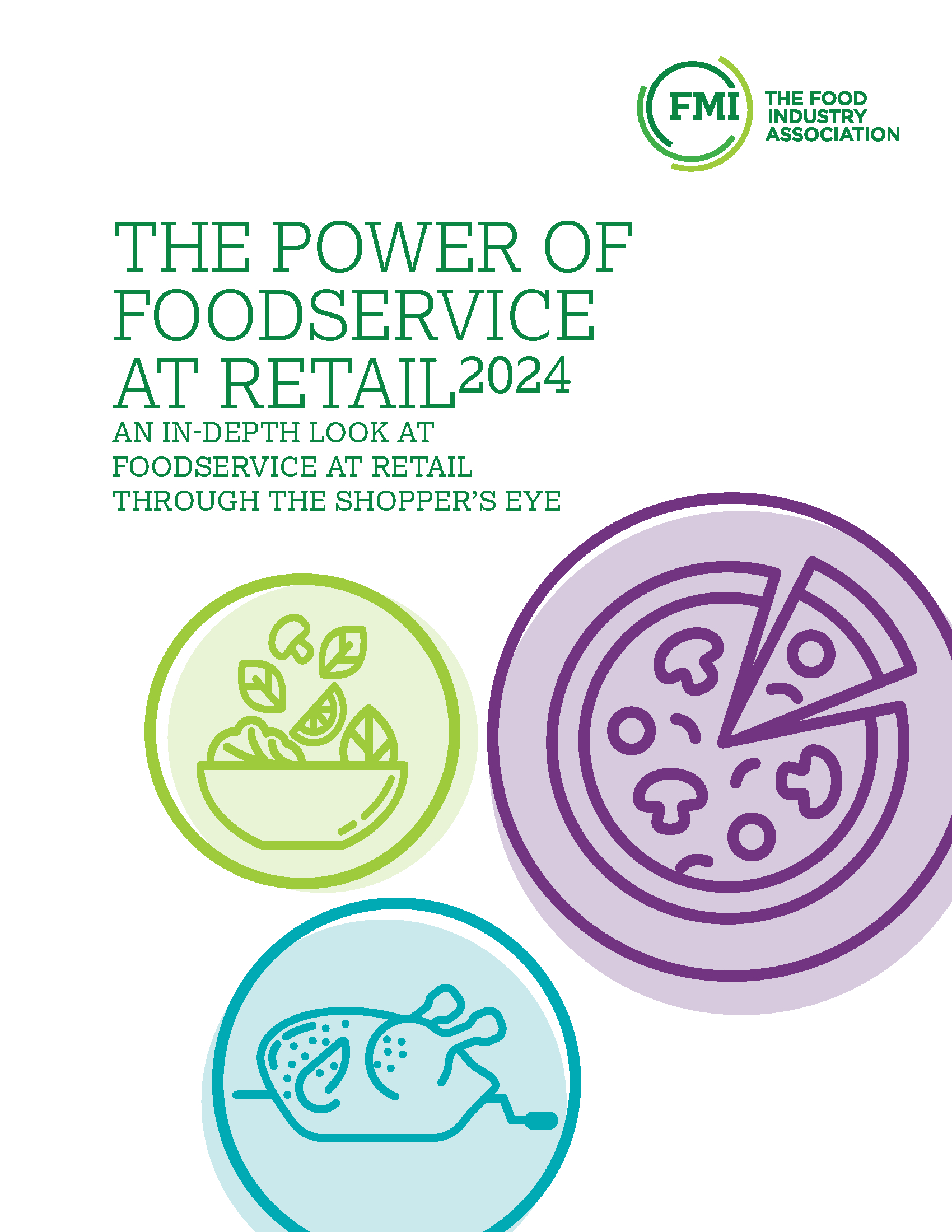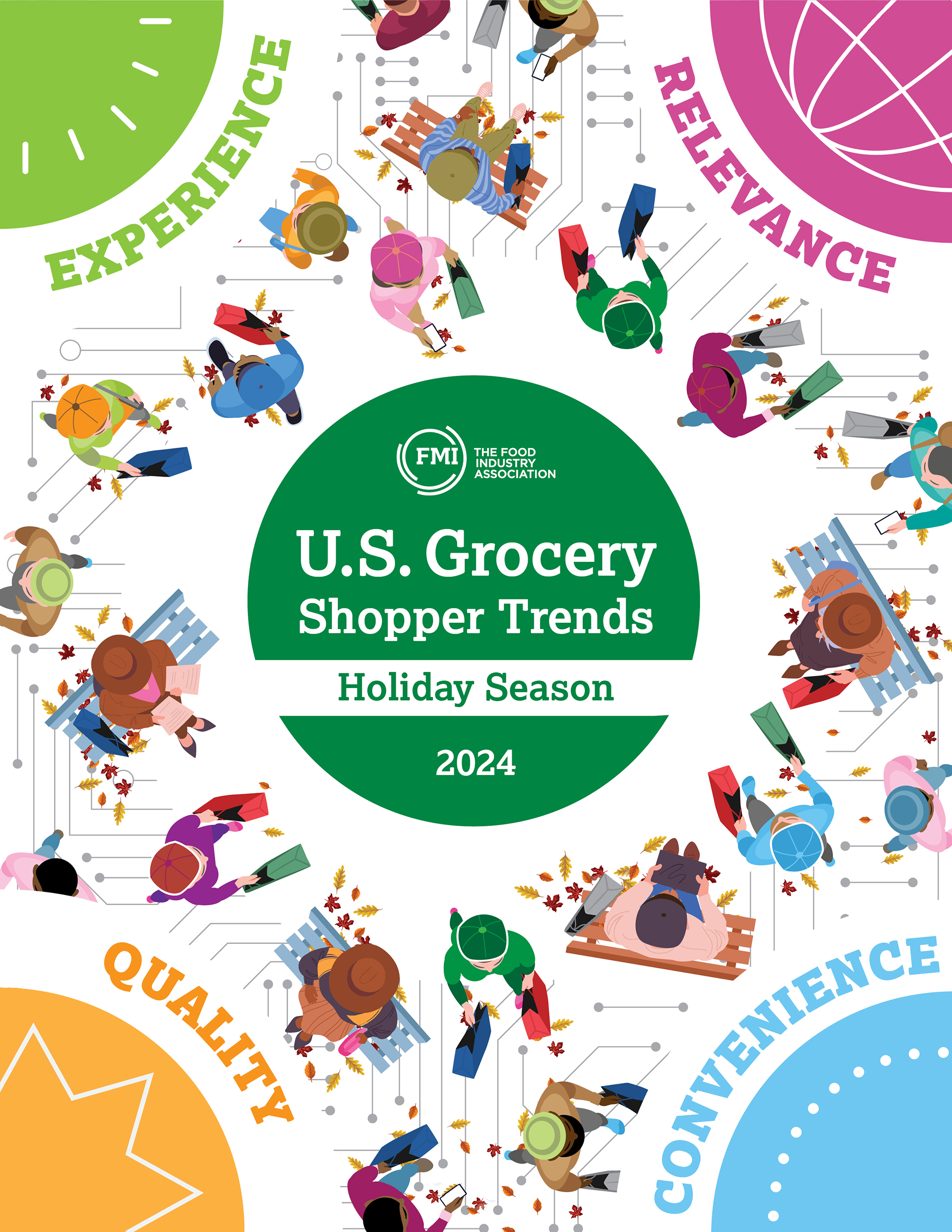Shoppers Embrace Budget Strategies and Retail Foodservice Options for a Joyful Holiday Season, FMI Reveals
Despite lingering concerns about rising food prices, U.S. shoppers are approaching the holiday season with a notable sense of optimism and preparedness. According to the Food Industry Association (FMI), 73% of holiday celebrants report feeling excited about the festivities, while 85% express confidence in managing their grocery budgets.

This resilience highlights a shift in consumer behavior, as shoppers find ways to adapt to economic challenges through strategic planning and resourceful shopping.
FMI’s President and CEO, Leslie G. Sarasin, underscored this sentiment, stating:
“While consumers remain understandably concerned about the cost of food impacting their holiday meal preparations, we continue to see remarkable resilience and adaptability among shoppers.”
This adaptability includes actions such as capitalizing on sales, prioritizing store brands, and starting holiday preparations earlier than usual.
A notable trend among consumers is the growing popularity of a “hybrid” approach to meal preparation, blending homemade dishes with retail foodservice items such as deli-prepared foods. As highlighted in FMI’s ninth annual Power of Foodservice at Retail report, this approach has gained traction, with shoppers increasingly relying on prepared items for convenience and cost-efficiency.

In fact, sales of retail foodservice prepared foods grew by 1.4% in 2024, reaching approximately $50.9 billion. This growth reflects an ongoing preference for balancing affordability with ease, especially during the busy holiday season.
Home-cooked meals remain central to holiday traditions, but shoppers are adapting their expectations to ensure a memorable experience.
Nearly 60% of holiday participants prioritize quality time with family and friends as the cornerstone of a successful celebration, while 32% emphasize creating a great homemade feast.
These priorities have led 40% of consumers to begin their holiday preparations more than a month in advance, mitigating the impact of potential disruptions such as ingredient shortages.
Concerns about availability remain prominent, with 39% of holiday shoppers expressing worry about out-of-stock ingredients, a figure that rises to 44% among households with children.
To address this, 46% of consumers are prepared to modify their menus with alternative dishes, and 30% are open to experimenting with new recipes.
FMI’s findings also shed light on broader grocery shopping habits. Weekly grocery spending has remained stable in 2024, averaging $158 per household.
Meanwhile, the frequency of consumers preparing dinner at home seven nights a week has seen a slight uptick, rising from 21% to 23%. Shoppers are also placing a greater emphasis on nutrition when purchasing deli-prepared foods, with 63% reporting at least some focus on healthy eating options.
Additionally, convenience continues to drive consumer preferences in retail foodservice. Nearly 71% of households purchase retail foodservice items regularly, averaging 9.5 transactions per year with an average spend of $8.30 per visit.
Many shoppers express interest in bundled offerings, with 59% seeking the ability to buy a combination of prepared foods, such as main courses, side dishes, and desserts, at a discounted rate.
For further insights, FMI’s U.S. Grocery Shopper Trends: Holiday Season report, the final installment in a five-part series, offers comprehensive data on consumer behaviors and preferences during this critical time of year.
Similarly, the Power of Foodservice at Retail 2024 report provides an in-depth look at the evolving role of prepared foods in grocery shopping. Both reports are available to members of the media at no cost and can be accessed at www.FMI.org.
FMI, as The Food Industry Association, continues to work across the value chain to ensure a safer, healthier, and more efficient food supply for consumers. By bringing together retailers, producers, and service providers, the association amplifies industry efforts to meet evolving consumer needs during the holiday season and beyond.






















